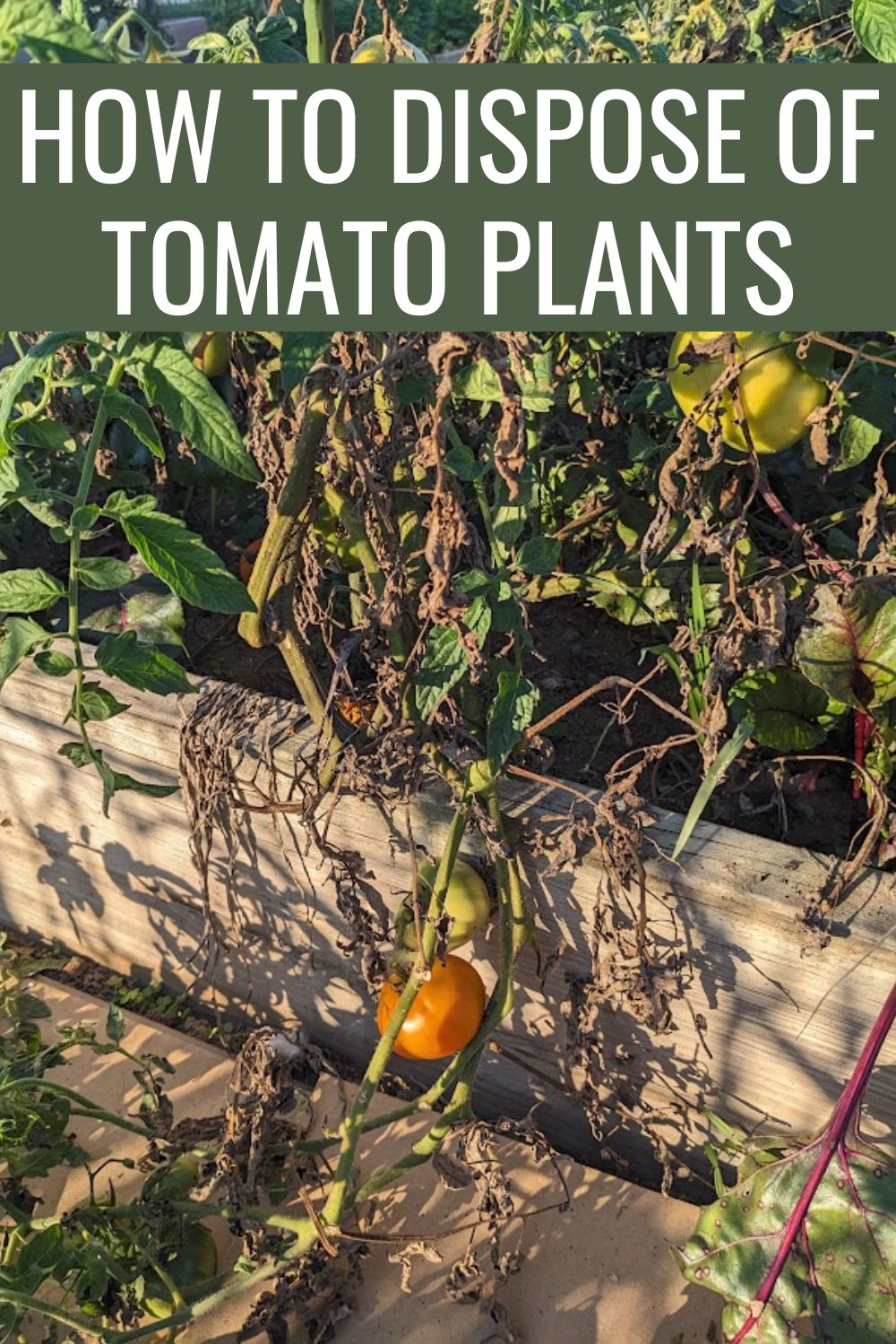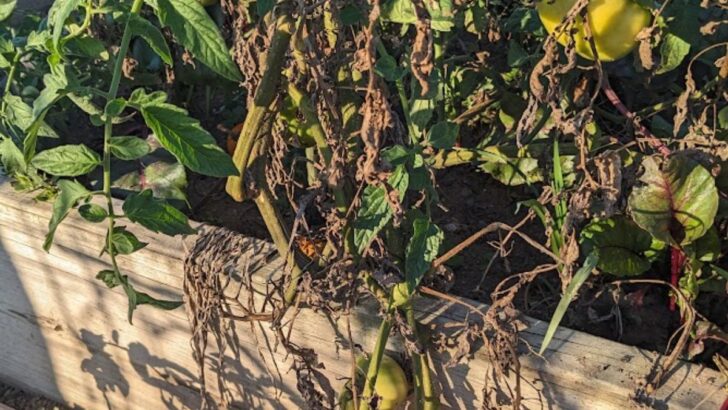As summer comes to an end, it’s time to do some general garden maintenance, replenish the soil, and tidy up dead plants. Many summer veggies are done for the year; tomatoes are one of these. They might look rough, diseased, and unappealing. If you wonder how to dispose of tomato plants correctly, this quick guide will help.
While many vegetables are easily disposed of by throwing them in the compost pile, tomatoes may need special treatment.
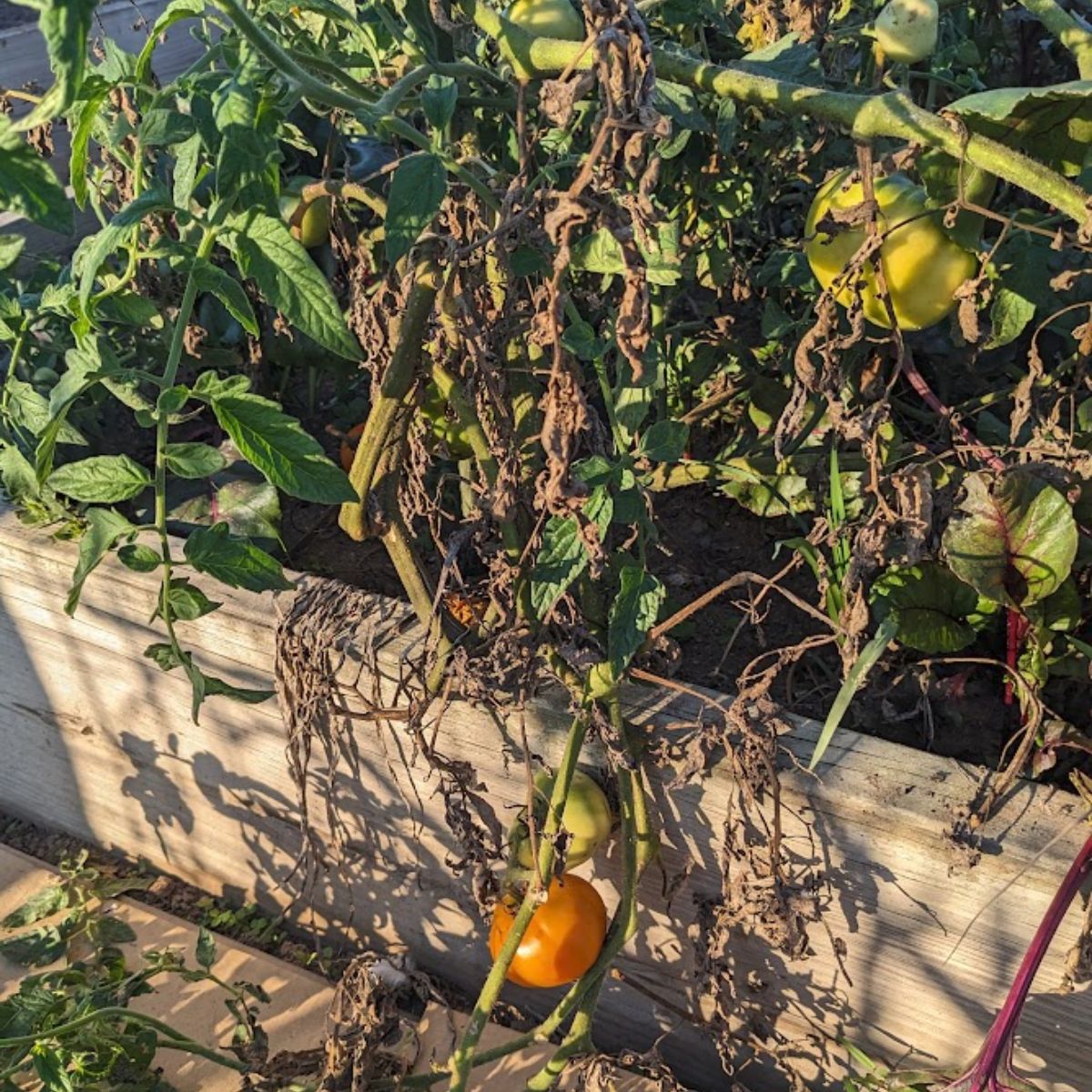
Do I Really Need to Dispose of Tomato Plants?
Can’t I just leave them there to disintegrate and maybe even get new tomato seedlings next year for free? In a perfect world, you could, but tomatoes are plagued with diseases that you will transfer to next year’s crop.
So the answer is yes, you need to properly dispose of tomato plants at the end of summer.
Here are some of the reasons :
End of tomato season
At the end of the tomato season, your plants will begin to die off naturally. As they lose their vigor and productivity, it’s essential to dispose of them properly. Removing tomato plants at the end of the season ensures that you maintain a healthy and clean garden environment, which is pivotal for the success of your future crops.
Spreading disease
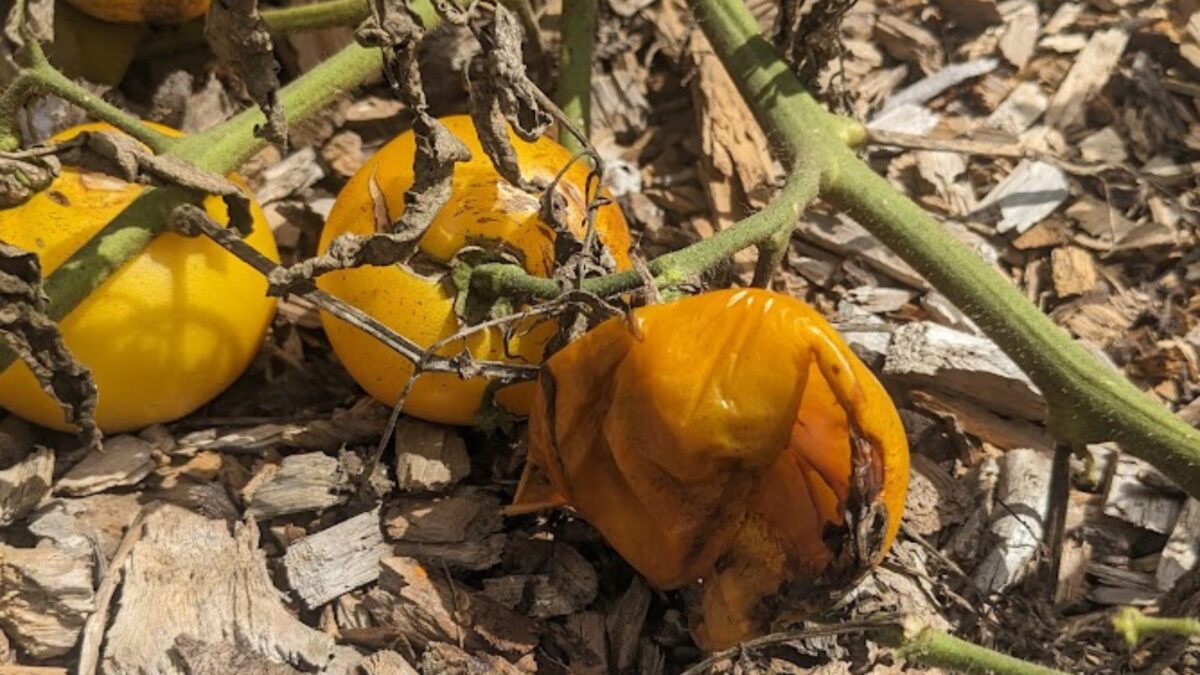
Without removing dying tomato plants, your garden could become a disease breeding ground. Tomato plants are prone to illnesses like tomato blight, fusarium wilt, and bacterial canker. These diseases can potentially infect other plants in your garden and spread quickly if not properly managed. Therefore, disposing of tomato plants is essential in preventing the spread of diseases and maintaining the overall health of your garden.
Pest infestation
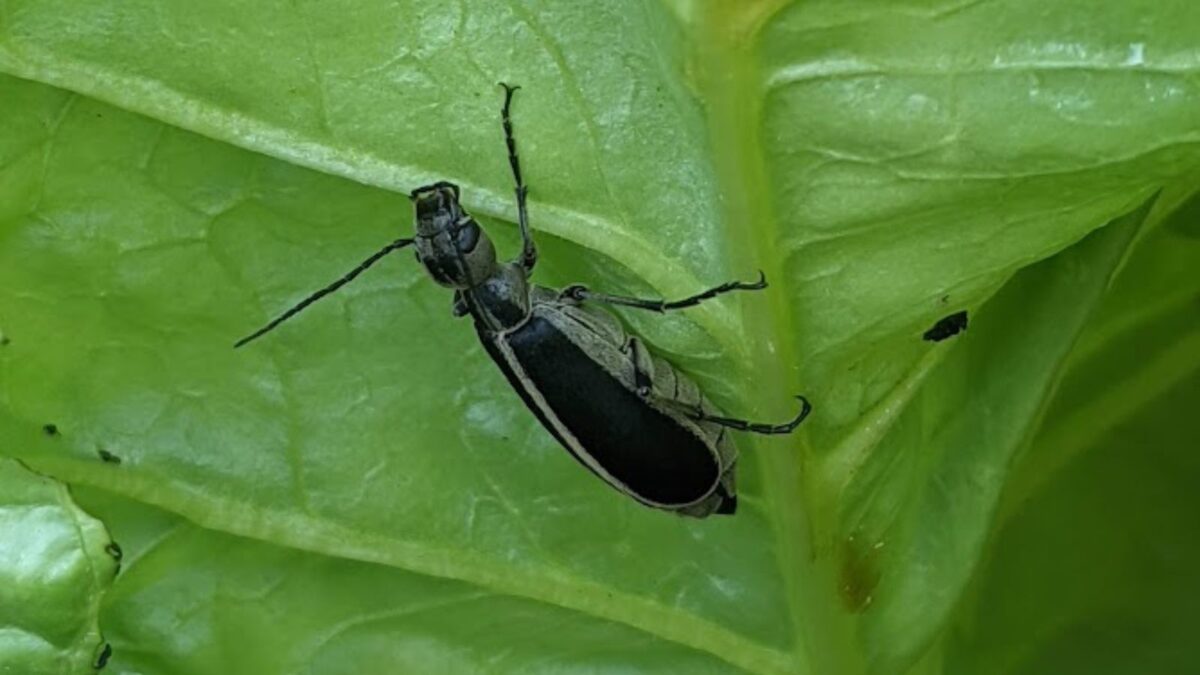
Tomato plants can easily fall victim to many pests, such as potato beetles, aphids, blister beetles, leaf hoppers and miners, tomato hornworms, and more. If you fail to remove dying tomato plants, you may inadvertently create a comfortable environment for these pests to thrive. Pests attracted to dying tomato plants may eventually move to your other, healthier plants, causing an infestation.
Disposing of tomato plants not only helps prevent pest infestations but also makes your garden more pleasing. By removing old and dying tomato plants, you can focus on caring for the remaining plants in your garden and prepare for the next growing season.
What is The Best Tomato Disposal Method
Trench composting
While throwing tomato plants in your home compost pile is not recommended (because home composting is not hot enough to kill the pests and diseases), trench composting them away from the garden is a great choice.
Just dig, bury, and cover. Simple, yet effective.
Learn more about trench or pit composting here.
Use a community composting center
If you’re unsure about composting on your own, consider community composting or utilizing a compost facility. These centers often use high-heat composting techniques to accelerate the process and reduce the risk of disease transmission.
Burn them
Another option for disposing of tomato plants is burning. Of course, burning should be done only under controlled conditions and in accordance with local regulations. Always ensure that you follow the necessary safety precautions and guidelines when using fire as a disposal method.
While each disposal method has its advantages and drawbacks, the ultimate goal is to dispose of your tomato plants responsibly, considering your garden’s health and your impact on the environment.
How to Prepare Tomato Plants for Disposal
Prune them

If your plants are still producing and have healthy branches, start by pruning the dead or diseased leaves and branches and dispose of them. This will allow the remaining healthy tomatoes to thrive until the first frost.
Ensure you are using clean and sharp pruning shears to make precise cuts and avoid causing damage to the remaining parts of the plants.
Remove fruits

If your plant is done producing new fruit, and you’re expecting a cold snap, collect all ripe, partially ripe, and green, unripe tomatoes and set them aside for consumption, ripening, or fermenting. By removing the fruits before disposing of your plants, you prevent waste and can still enjoy the benefits of your hard work.
Separate diseased plant parts
As you continue preparing your tomato plants for disposal, inspect them for any signs of mold, mildew, or disease. If you find any diseased portions, it’s crucial to separate them from the healthy parts of the plants. Dispose of these diseased portions appropriately to prevent the spread of pathogens and protect the health of your other vegetable plants.
Now that your tomato plants are pruned, fruits removed, and diseased portions managed, you can dispose of them using appropriate methods such as composting, burying, or burning.
It’s a good idea to mix the tomato plant material with other organic matter like grass clippings and straw to create a balanced compost mixture when composting. Remember to maintain the proper temperature in your compost pile to effectively break down the plant material and prevent the spread of diseases.
If you Choose To Compost Your Tomato Plants
Check local regulations
Before composting tomato plants, it’s essential to check your local regulations. Some areas have restrictions on community composting or disposing of garden waste in a composting center. It is crucial to ensure that you follow local guidelines when disposing of your old tomato plants to prevent potential problems.
Use high-heat composting
Composting tomato plants should be done through high-heat composting to break down disease-causing pathogens effectively. This method utilizes high temperatures to kill harmful bacteria, fungal growth, and seeds of weeds that may be present in the decaying plants. By maintaining a compost pile temperature between 131°F and 160°F, you can eliminate pathogens, mildew, and blight, making the compost safe to use in your garden.
To achieve high-heat composting, turn your compost pile frequently, adding a balanced mix of carbon-rich materials, such as foliage and clippings, and nitrogen-rich materials, like food scraps and green plant waste. This balanced mix allows beneficial microorganisms to thrive, generating heat and effectively breaking down the organic material.
Limit disease spread through composting
One of the main concerns when composting tomato plants is the risk of spreading diseases to your healthy plants through the compost. Pathogens from decaying tomato plants may survive in the composting process, which could infect new plants later on.
To minimize this risk, remove and dispose of any visibly diseased plant parts, such as foliage with fungal spots or mildew, before adding your tomato plants to the compost pile. Additionally, monitor the temperature of your compost pile closely. If the pile’s temperature drops, this indicates that the composting process is slowing down, and pathogens might still be present.
How to Dispose of Tomato Plants
Here’s a two-minute video showing how to dispose of tomato plants.
Keep in mind the various disposal methods, and choose the one that best suits your situation.
Learn More About Growing Tomatoes
- hydroponic tomato growing tips
- staking tomatoes for a higher yield
- help tomatoes grow faster
- how to prune tomato plants
- best companion plants for tomatoes
- do deer eat tomatoes?
- why are my tomatoes splitting?
- tomato problems and how to fix them
